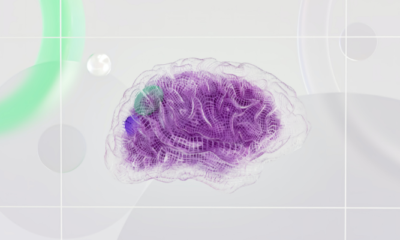Technology
Brain-Machine Interfaces (BMIs): Integrating the Human Brain with External Devices for Enhanced Capabilities

Are you ready to unlock the true potential of your brain? Brain-Machine Interfaces (BMIs) are transforming the way we interact with technology by connecting our brains directly to external devices. Imagine controlling a computer or prosthetic limb using just your thoughts. The possibilities are endless. In this article, we will delve into the world of BMIs, exploring how they work, their benefits, drawbacks, and the current and future applications of this groundbreaking technology.
Introduction
How BMIs Work
Brain-Machine Interfaces (BMIs) are sophisticated systems that establish communication between the human brain and external devices. These interfaces rely on electrodes implanted in the brain or non-invasive sensors that detect neural activity.
When you think about moving your arm, for instance, specific neurons in your brain generate electrical signals. BMIs can capture and interpret these signals, translating them into commands that control external devices like prosthetic limbs or computer cursors.
The process of decoding neural activity into machine commands requires advanced algorithms that accurately interpret patterns of neural firing.
Invasive BMIs involve surgically implanting electrodes in targeted areas of the brain responsible for movement planning and execution. Non-invasive BMIs, on the other hand, use techniques like scalp electroencephalography (EEG) or functional magnetic resonance imaging (fMRI) to measure changes in blood flow associated with cognitive functions.
Though far from perfection, BMI technology advancements hold promise for restoring lost functions due to injury or disease and enhancing natural capabilities through seamless integration with machines.
The benefits of Brain-Machine Interfaces (BMIs) are significant and can greatly impact our lives. Here are some key advantages of BMIs:
Restoring Mobility: BMIs enable individuals with disabilities, such as paralysis or motor impairments, to regain mobility and independence. By connecting the brain directly to external devices like robotic arms or prosthetic limbs, BMIs empower users to perform tasks they were previously unable to do.
Improved Healthcare: BMIs provide real-time information about patients’ brain activity during surgeries or treatments. This data can lead to better diagnoses, personalized treatment plans, and improved healthcare outcomes.
Enhanced Cognitive Abilities: BMIs have the potential to enhance cognitive functions such as memory and learning. By linking the brain with machines, BMIs enable faster access to vast amounts of information, which can revolutionize education, research, and problem-solving.
Expanded Communication: BMIs offer a means for individuals with communication disabilities to interact more efficiently with their environment. By directly connecting the brain to external devices, BMIs can facilitate better communication and interaction for people with speech impairments.
Future Possibilities: BMIs hold immense potential for future applications. They can revolutionize fields like gaming, entertainment, military operations, and education, allowing users to control virtual environments, operate equipment remotely, and interact with educational materials through their thoughts.
While there are challenges to address, the benefits of BMIs are significant and can greatly enhance the quality of life for individuals with disabilities, improve healthcare practices, and unlock new potentials in human-machine interaction.
Drawbacks of BMIs
While brain-machine interfaces (BMIs) offer groundbreaking opportunities, it’s essential to consider their drawbacks. One major concern is the risk associated with invasive procedures. Many BMIs require surgically implanting electrodes in the brain, which carries a notable risk of infection or other complications.
Unintended consequences are another consideration. As with any new technology, there is a possibility of unforeseen side effects arising from long-term BMI usage.
Privacy and security concerns are also worth noting. Protecting personal data collected through BMI devices is crucial to ensure it remains secure and inaccessible to hackers or malicious individuals.
Ethical considerations surround the use of BMIs as well. Some worry that these devices could be used to manipulate or control individuals without their consent, raising questions about autonomy and consent in brain-computer interactions.
While BMIs offer exciting possibilities for enhancing human capabilities and improving quality of life, it’s vital to carefully weigh these potential drawbacks before fully embracing this emerging field.
Current and Future Uses of BMIs
BMIs are rapidly advancing technologies with numerous potential applications. Currently, they primarily assist individuals with disabilities in performing tasks they
couldn’t do otherwise. For example, paralyzed individuals can use BMIs to control prosthetic limbs or computer interfaces.
However, the future uses of BMIs extend far beyond assisting disabilities. Researchers are exploring BMIs in gaming and entertainment, military applications, and even education.
In gaming and entertainment, BMIs could offer more immersive experiences, allowing users to control virtual environments through their thoughts instead of traditional input methods.
In military applications, BMIs could enable soldiers to remotely control drones or equipment without physically being present on the battlefield.
Researchers are also investigating whether BMIs could enhance learning outcomes by allowing students to interact directly with educational materials through their thoughts.
The possibilities for current and future uses of BMI technology are vast and exciting. As research progresses, we anticipate increasingly innovative ways for humans to interface with external devices using their brains.
Conclusion
Brain-Machine Interfaces (BMIs) represent a fascinating technological breakthrough that has the potential to revolutionize human-machine interactions. While challenges remain, the benefits of BMIs are undeniable.
The ability to control devices using our thoughts alone can redefine the lives of people with disabilities. BMIs also offer the potential to enhance human capabilities in fields such as sports, military operations, and even video gaming.
Nevertheless, ethical considerations and potential drawbacks must be carefully addressed. As with any new innovation, society must approach BMIs thoughtfully, considering both the benefits and challenges they present.
While further research is needed to fully understand the impact of BMIs on humanity, it’s evident that they represent an exciting new frontier in human-machine interaction.
























